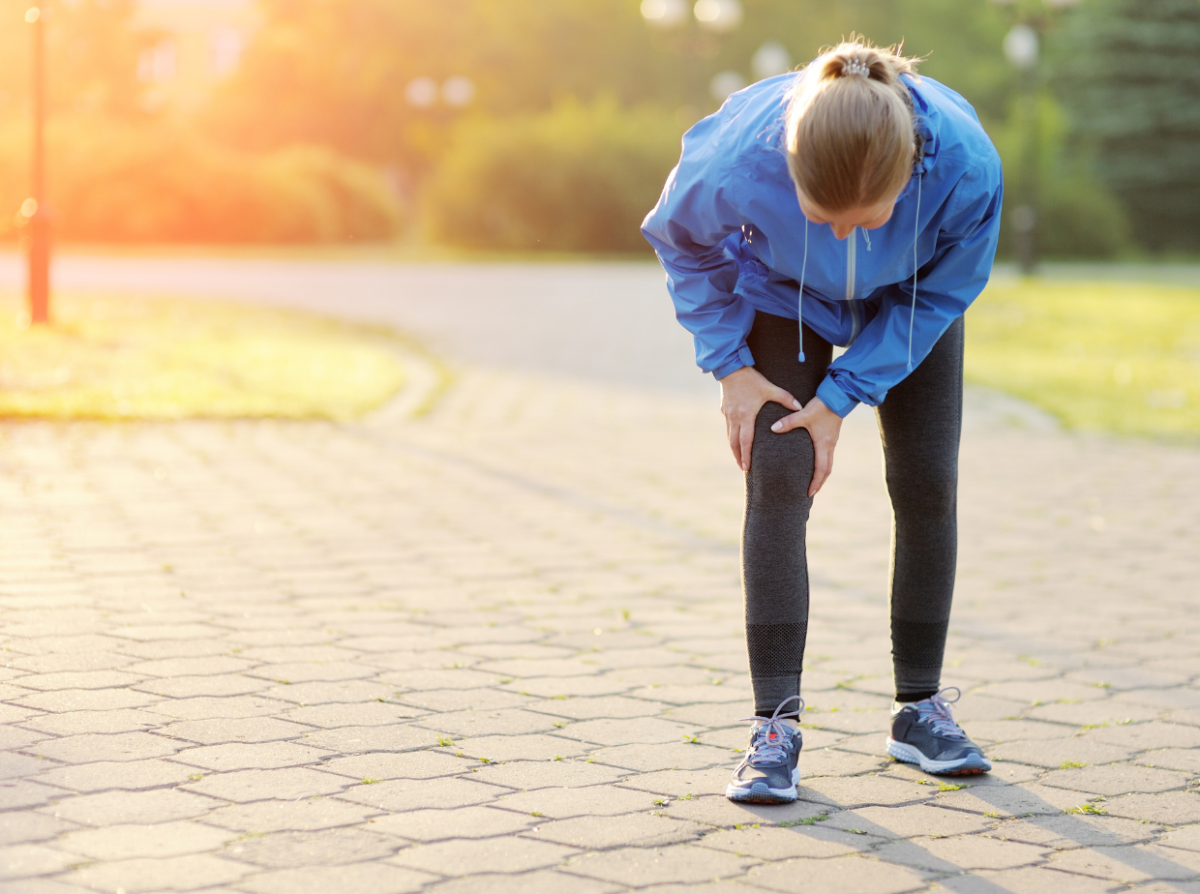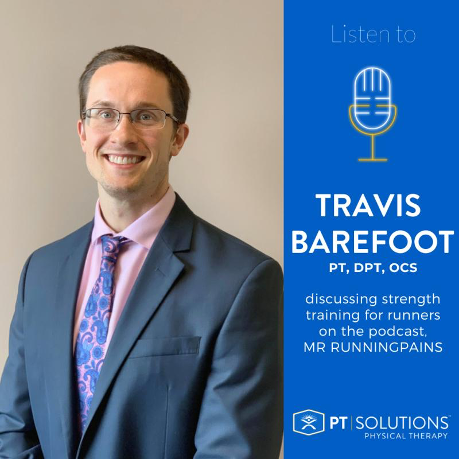What Causes Running Injuries?

News flash, runners injure themselves frequently. Making matters worse, they don’t stop running. One study following 161 runners preparing for either a half or full marathon found 9 out of 10 runners reported illness or a running-related injury leading up to the race. At any two-week period of the 16-week study, 1 out of 7 runners experienced an illness or running-related injury. As any runner will know, most of those injuries did not result in withdrawal from the race. There are three certainties in life: death, taxes, and runners will keep running despite being injured.
What causes injuries? How do we prevent them? The results may surprise you.
Which Shoes Should You Pick?
One of the most commonly cited methods to reduce running injury risk is choosing the right shoe. The Global Athletic Footwear Market will reach $114.8 billion by 2022. Financial motivators and personal experience drive shoes recommendations and purchases
The typical concerns related to running shoes are foot control, turnover, cushioning, and durability. I will not cover all there is to know about shoes, but I will highlight an interesting research review by Nigg et al. published in the British Journal of Sports Medicine. Here is what they concluded:
Specifically, the data regarding the relationship between impact characteristics and ankle pronation to the risk of developing a running-related injury is reviewed. Based on the lack of conclusive evidence for these two variables, which were once thought to be the prime predictors of running injuries, two new paradigms are suggested to elucidate the association between footwear and injury. These two paradigms, ‘the preferred movement path’ and ‘the comfort filter’, suggest that a runner intuitively selects a comfortable product using their own comfort filter that allows them to remain in the preferred movement path. This may automatically reduce the injury risk and may explain why there does not seem to be a secular trend in running injury rates.
Translation: shoe comfort is the most important feature.
Choosing insoles and shoes that are comfortable and allow for a natural movement pattern reduces effort and lowers injury risk. Let’s look at another common focus of runners.
Is Foot Pronation a Problem?
We often place the blame of running-related injuries on overpronation. Theoretically, stability shoes prevent injuries by limiting pronation. Sales reps will quickly point out pronation during a running analysis and make a shoe or insert recommendation to “correct the flaw.”
There is a glaring problem with these approaches. Pronation is necessary.
Pronation may be beneficial for injury prevention. Researchers quantified the foot pronation for 927 novice runners and tracked them for 1 year. The group with the lowest injury incidence held a position of 7–10° pronation. This hardly means we should start training runners to emphasize pronation, but it calls into question the common shoe designs and instructions focused on avoiding pronation.
Should You Land on Your Heels, Midfoot, or Forefoot?
When companies design shoes, they often look at impact forces. Shoe companies may design running shoes with more cushioning, but this adds weight to the shoe and impacts performance, foot positioning, or both. We need a balance. Shoe design, however, is only a piece of the puzzle.
When Born to Run was published in 2009, barefoot running exploded. Runners abandoned their shoes – unless they were FiveFinger shoes – and universally adopted forefoot running. Is this wise?
Researchers often assess foot strike pattern. One of the common measurements used is ground-reaction force. This relates to Newton’s Third Law: for every action, there is an equal and opposite reaction. The goal is to limit ground reaction forces, thereby, limiting stress on the body and potential injury.
The argument in favor of using a forefoot or midfoot strike instead of a heel strike is primarily focused on impact forces. True, strike patterns can influence performance, as a forefoot strike increases turnover rate – try sprinting with a heel strike – but I am currently focused on injuries.
Research shows forefoot landing has lower peak impact forces than heel striking. Heel strikers can even the playing field with a cushioned heel, but there may be other consequences, such as increased stride length, decreased turnover, and changes in loading patterns. It is likely the cushion will impact the peak impact forces more than the loading rates – how fast the forces are applied – due to the nature of the heel strike and using the heal as a braking mechanism. Some studies indicate loading rates are more concerning than peak forces for developing injuries. For example, runners who have suffered from a tibial stress fracture display greater instantaneous and average vertical loading rates.
One argument made against peak forces is the difference between sprinters and distance runners. While sprinters have significantly higher peak forces than distance runners, they do not have greater injury rates. The mileage and duration of running, however, is much lower for sprinters. Regardless, it appears forefoot striking does limit forces. The question now is how much stress is too much?
Research shows runners who use a heel strike are more oft-injured than those using a mid and forefoot strike, but the sample size was small and in trained individuals (Division 1 Cross Country Collegiate Athletes). With differing workloads and intensities, a history of training, and access to coaches and dieticians, it is difficult to apply these findings to the general runner.
In studies with larger samples, the results are mixed. One study found no significant differences in overall injury rates between rearfoot and forefoot strikers. When breaking down by injury type, other studies found midfoot dorsal pain, metatarsal stress fractures, Achilles tendinitis, and post tibial tendinitis were the most common injury type but there was no difference in rates between strike pattern. Overall, research does not support the claims of specific foot strike patterns leading to specific injuries.
If Shoes and Strike Pattern Don’t Matter, What Does?
If traditional areas of focus – shoe type, pronation, strike pattern – are not concerns, what should runners focus on? The aforementioned variables matter, just not as much as people are made to believe. Same with running mechanics. There is no perfect way to run.
Usain Bolt and Michael Johnson ran too upright. Their careers turned out OK.
I am not saying running mechanics don’t matter, but there are many very effective and efficient ways to run. Much depends on our body types – height, weight, proportions. All variables need to be tailored to the individual. There is no one-size-fits-all approach. While this last variable needs individuality too, it is often neglected.
More attention needs to be given to running intensity.
Running volume is regularly measured, but the intensity is often neglected. Many runners have heard of the 10% rule. When building volume for a big race – such as a marathon – each week you increase your volume by 10%. This method has merit but it is far from concrete.
A 2008 study published in the American Journal of Sports Medicine showed graded training did not impact injury rates. All participants had not run in the previous 12 months or sustained an injury in the previous three. The two randomized groups received differing training instructions. The graded training group received a 13-week schedule which gradually increased running time and decreased walking time for the week. The control group received an 8-week schedule with the same pattern, except the changes were more dramatic.
Each group started with 30 minutes of self-selected pace running and 30 minutes of walking in the first week. At week 12, the graded group finished with 90 minutes of running and no walking, while at week 7, the control group completed 95 minutes of running and 5 minutes of walking. The final week for both groups, the week before a planned 4-mile race they were all preparing for, consisted of 30 minutes of running and no walking (a de-load week).
This study was not only looking at a 10% grade increase — the oft-recommended amount — but also looking at a difference in overall training volume. At the end of the study, the difference in injury risk between the groups was statistically insignificant, meaning any difference could be due to chance. The graded group had 30 running-related injuries (RRI) per 1000 running hours and 20.8 RRI per 100 runners at risk compared to 38 RRI per 1000 hours and 20.3 RRI per 100 runners for the control group.
But this is only looking at volume. What about intensity?
Running Volume and Intensity are Key, but How Much is Too Much?
Runners often determine their training volume strictly by the number of miles they run. This is akin to measuring your volume in the gym only by the total number of sets you lift. A mile is not a mile. What was the speed, the variability, the external conditions (e.g. temperature), and the gradation (e.g. hills vs. flat)? What other training is being completed (lifting weights, swimming, yoga, etc.), and what are the recovery strategies (sleep, diet, rest)? The intensity of the training must be considered for both improving performance and preventing injuries. Volume is important, but it is only part of the equation.
This is where art meets science. Training should include variety. Throughout the week, change the distance and speed you run. Alter the location. Listen to your body as well.
If you are not getting good sleep, eating well, or recovering between runs, you may need to ease off the pedal. You wouldn’t go to the gym and only do bench press, so why would you only do long, slow runs? Running culture loves to focus on the number of miles completed, but this is a short-sided and potentially harmful focus.
Running is a prime example of weighing risks and rewards. It is good for your health but carries injury risks. You can be fit and healthy without running, but any form of exercise carries injury risks. Ask yourself, do you enjoy running?
If so, run. Understanding the risks for injury can help minimize the chances of injury, but it won’t prevent them. The same goes for any type of exercise. The only way to prevent injuries is to avoid activity. That will cause more harm than benefit. There will always be a risk for injury when exercising, but the benefit often far outweighs the harm.
Interested in learning more? Hear from Travis Barefoot, one of our Orthopedic Residency Senior Faculty and a Senior Clinic Director in the North Caroline Market, on the Mr. Running Pains Podcast. Travis provides great tips on strength training and injury prevention for runners.

If you are having pain or difficulty when running, consult with one of our physical therapists today. We can help you build an individualized training program to address your pain and concerns. Check out our many locations and services on our website. Regardless of your training history or goals, our highly trained therapists will help you get you back on the track, trail, pavement, or treadmill.
ABOUT THE AUTHOR

Zach Walston (PT, DPT, OCS) grew up in Northern Virginia and earned his Bachelor of Science in Human Nutrition, Foods, and Exercise at Virginia Polytechnic Institute and State University. He then received his Doctorate of Physical Therapy from Emory University before graduating from the PT Solutions’ Orthopaedic Residency Program in 2015.
Zach has numerous research publications in peer-reviewed rehabilitation and medical journals. He has developed and taught weekend continuing education courses in the areas of plan of care development, exercise prescription, pain science, and nutrition. He has presented full education sessions at APTA NEXT conference and ACRM, PTAG, and FOTO annual conferences multiple platforms sessions and posters at CSM.
Zach is an active member of the Orthopedic and Research sections of the American Physical Therapy Association and the Physical Therapy Association of Georgia. He currently serves on the APTA Science and Practice Affairs Committee and the PTAG Barney Poole Leadership Academy.